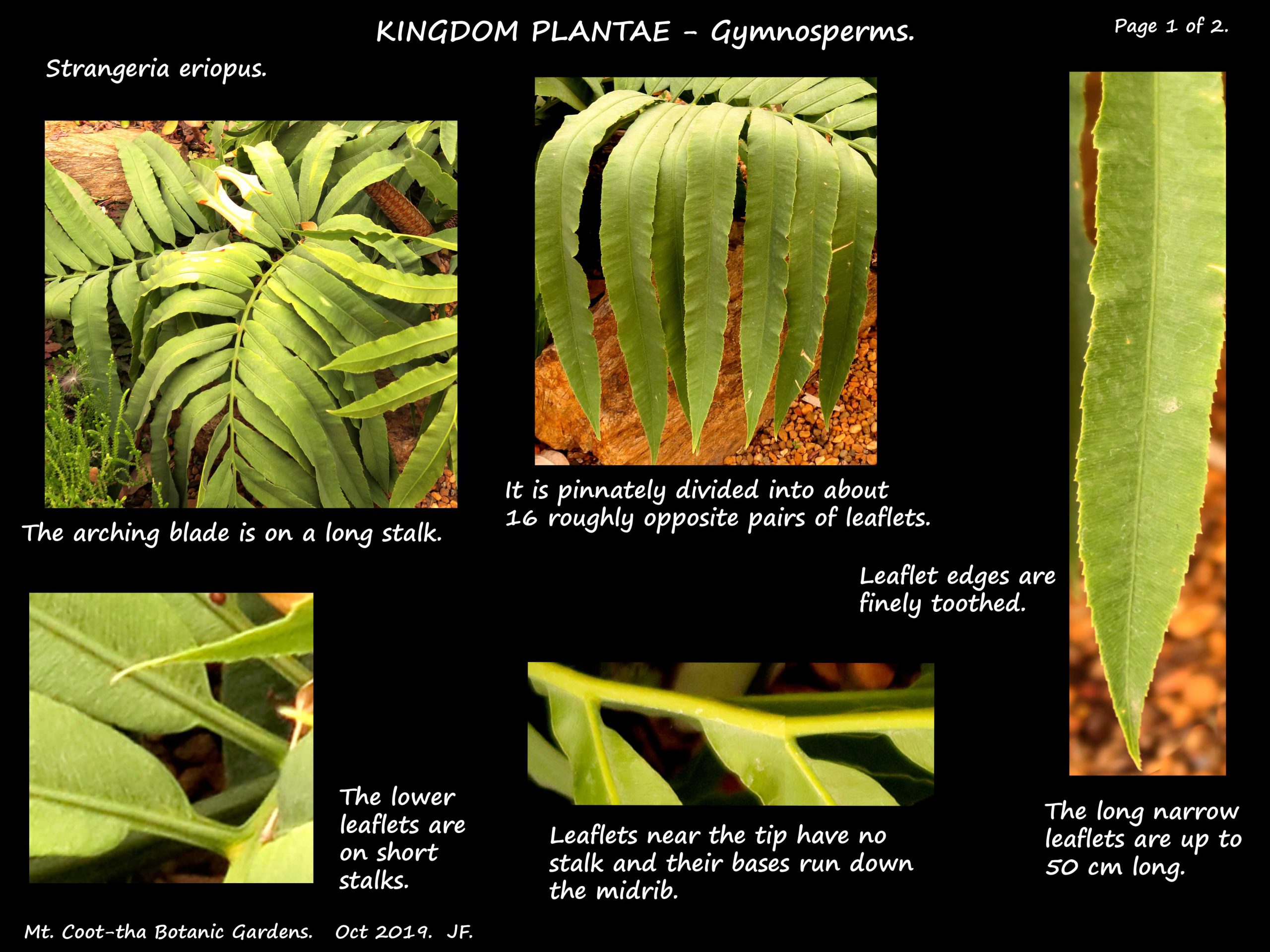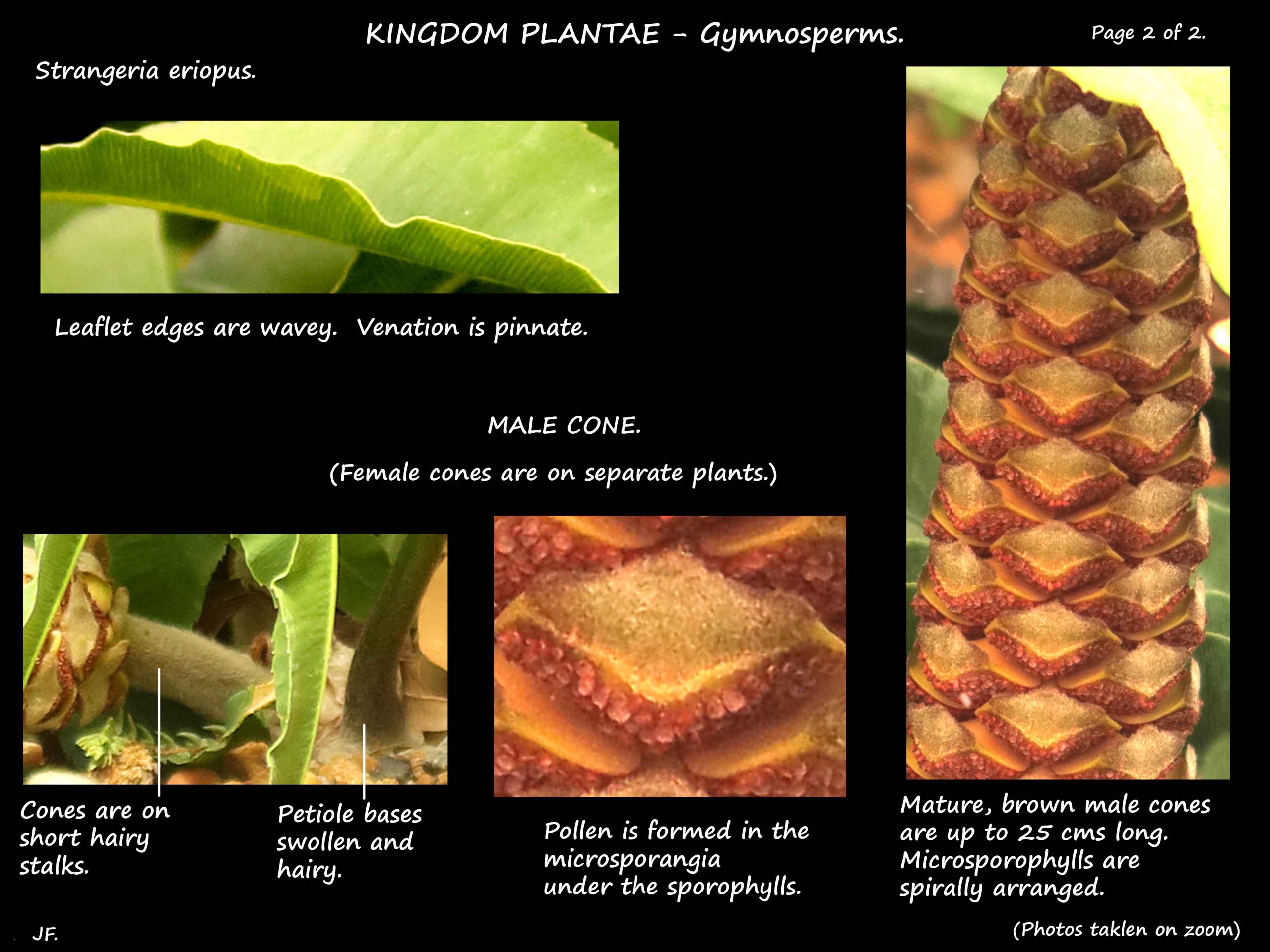Stangeria eriopus.
Order Cycadales > Family Stangeriaceae > Subfamily Stangerioideae.
Strangeria is sometimes seen in Family Zamiaceae > Subfamily Zamioideae but more likely
belongs in Family Strangeriaceae with the closely related Bowenia.
S. eriopus is the only species in the African Strangeria genus and the 2 species of Bowenia
are found in Queensland.
The size and form of Stangeria eriopus is variable and it is sometimes divided into 2 varieties.
The underground stem, with a large tuber, may or may not branch.
There are small roots on the tuber.
Up to 30 leaves, from 25 cm to 2 m long, arise from this stem.
The erect petiole, 10 to 80 cm long, is up to half the length of the arching blade.
The base of the petiole is swollen and hairy but there are no spines.
The tip of the young leaves is coiled like that of ferns.
Young leaf blades have hairs.
Adult blades are pinnately divided with 5 to 20 pairs of roughly opposite leaflets.
Leaflets are narrowly lanceolate to oblong and up to 50 cm long by 5 cm wide.
The lower leaflets are on short stalks.
Leaflets towards the tip have no stalk and their bases run down the midrib.
Leaflet edges are finely toothed, slightly wavy and the tips are rounded or pointed.
The leaflets are pinnately veined and the midrib is prominent.
(Cycadaceae only have 1 central vein.)
The male and female cones, on different plants, are on stalks.
Cones and stalks both have hairs when young.
The cylindrical male cones, up to 25 cm long by 4 cm wide, age from yellow to brown.
The overlapping microsporophylls (scales) are spirally arranged.
The triangular to rhomboid tips are about 12 mm across.
There are pollen forming microsporangia on the underside.
Mature, green, female cones, up to 18 cm long by 10 cm wide, are egg-shaped.
The overlapping megasporophylls, spirally arranged, are up to 6 cm across.
There are 2 ovules on the underside of each.
The seeds, ripening from red to brown, are up to 3.5 cm long.
J.F.



